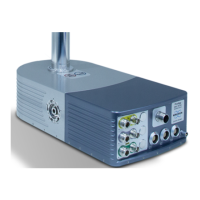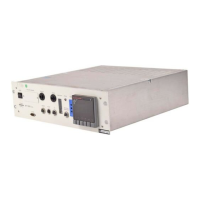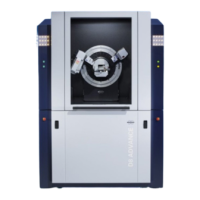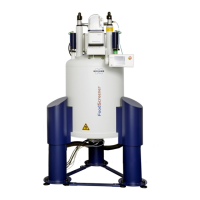Bruker Confidential Information
1.2. Safety Precautions
Residual Risks
ContourGT systems are designed to minimize potential health and safety hazards during normal
operation and routine maintenance. However, as with any mechanical system that uses electrical
energy and compressed air, it contains some physical and electrical hazards. There are also pinch
point hazards from some of the moving parts. You should be aware of these potential hazards and
the controls used to minimize them. Customer is advised that, if the equipment is used in a manner
not specified by the manufacturer, the protection provided by the equipment may be impaired.
Review this section and contact Bruker if you have any questions on environmental, health, or
safety-related issues associated with the system.
Potential safety hazards associated with the system are clearly identified in this manual. In
addition, safety labels have been placed on the system where there exists a potential for personal
injury or damage to the system. The following table 1.1 illustrates each label and its text message,
and indicates where the label is used in the system.
Illustration Label Text Where Used
ONLY authorized personnel
may service this equipment.
See manual for safety informa-
tion.
Interface Box
Pinch point hazard. Keep
hands clear.
Standard manual stage and
optional motorized stage: X
platform and Y platform
Table 1.1: Labels use to Identify Residual Risks
Electrical Hazards
The system uses electrical power up to 24 VDC and 265 VAC. High voltage or amperage (current)
hazards are sufficient to cause death or serious injury to personnel. The primary hazard associated
with electricity is electrical shock, which occurs when electrical current flows through part of the
human body. Current levels as low as 5 milliamps can cause a painful shock, 10-16 milliamps can
cause loss of muscular control (preventing the victim from letting go of the source of shock), and
75 milliamps can cause heart fibrillation (which can be fatal). Therefore, higher voltage circuits
pose a greater risk of electrical shock because they have more potential energy to cause an electrical
current to flow. However, under the right conditions, even a 30-volt circuit has enough energy to
cause 75 milliamps of current to flow through a person’s body, possibly causing heart fibrillation
that could result in death.
To minimize the risk of electrical shock, the system should be fully de-energized and locked-out
when performing maintenance tasks. These tasks may include such activities as replacing fuses or
other electrical components. Extreme caution should be used during troubleshooting operations of
the electrical system, as live electrical circuits are present. Work with live electrical circuits may
3
